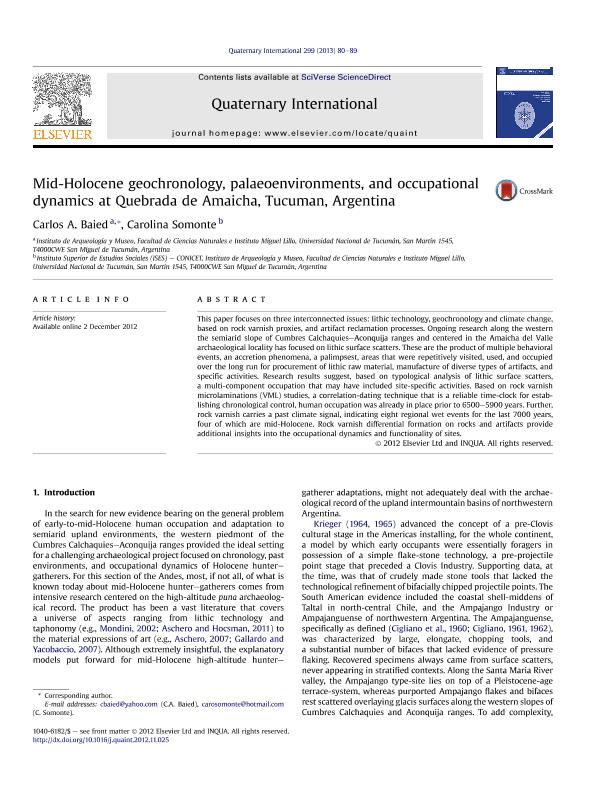Artículo
Mid-Holocene geochronolgy, palaeoenvironments, and occupational dynamics at Quebrada de Amaicha, Tucuman, Argentina
Fecha de publicación:
04/2013
Editorial:
Pergamon-Elsevier Science Ltd
Revista:
Quaternary International
ISSN:
1040-6182
Idioma:
Inglés
Tipo de recurso:
Artículo publicado
Clasificación temática:
Resumen
This paper focuses on three interconnected issues: lithic technology, geochronology and climate change, based on rock varnish proxies, and artifact reclamation processes. Ongoing research along the western the semiarid slope of Cumbres CalchaquieseAconquija ranges and centered in the Amaicha del Valle archaeological locality has focused on lithic surface scatters. These are the product of multiple behavioral events, an accretion phenomena, a palimpsest, areas that were repetitively visited, used, and occupiedBover the long run for procurement of lithic raw material, manufacture of diverse types of artifacts, and specific activities. Research results suggest, based on typological analysis of lithic surface scatters, a multi-component occupation that may have included site-specific activities. Based on rock varnish microlaminations (VML) studies, a correlation-dating technique that is a reliable time-clock for establishing chronological control, human occupation was already in place prior to 6500e5900 years. Further, rock varnish carries a past climate signal, indicating eight regional wet events for the last 7000 years, four of which are mid-Holocene. Rock varnish differential formation on rocks and artifacts provide additional insights into the occupational dynamics and functionality of sites.
Palabras clave:
Hunters - Gatherers
,
Rock Varnish Microlamination
,
Vml
,
Ampajango
Archivos asociados
Licencia
Identificadores
Colecciones
Articulos(ISES)
Articulos de INST.SUPERIOR DE ESTUDIOS SOCIALES
Articulos de INST.SUPERIOR DE ESTUDIOS SOCIALES
Citación
Baied, Carlos Alberto; Somonte, Carolina; Mid-Holocene geochronolgy, palaeoenvironments, and occupational dynamics at Quebrada de Amaicha, Tucuman, Argentina; Pergamon-Elsevier Science Ltd; Quaternary International; 299; 19; 4-2013; 80-89
Compartir




